The 10 Biggest AWS News Stories of 2022
CRN breaks down the 10 most important AWS news stories of 2022—from being awarded the Ukraine Peace Prize to calling out Microsoft to new innovation and a bullish partner push.
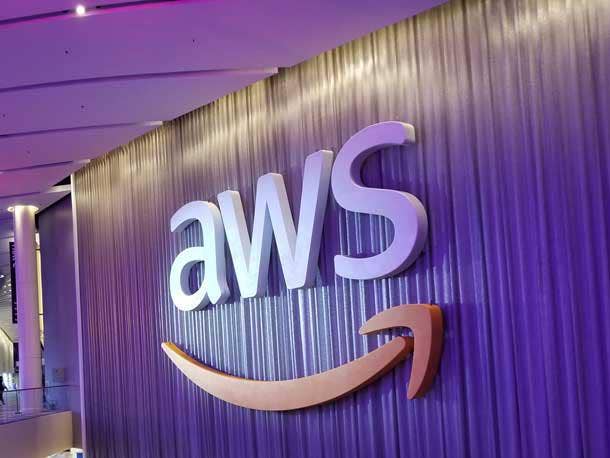
From Ukraine President Volodymyr Zelenskyy awarding Amazon Web Services the Ukraine Peace Prize to a heavy drumbeat of new product launches, there was no shortage of news coming out of AWS in 2022.
The Seattle-based worldwide leader in cloud computing had its biggest year to date as annual revenue is expected to exceed $80 billion in 2022 with no signs of slowing down in 2023.
In 2022, AWS doubled down on cybersecurity, global data center expansion, new partnerships, the AWS Marketplace and channel partners, while the cloud giant didn’t have to conduct large layoffs like some other IT vendors did.
[Related: AWS re:Invent Recap: 20 Biggest Products And Announcements]
Bet On AWS Cloud In 2023
Although there is economic uncertainty ahead in 2023, CEO Adam Selipsky told customers and partners not to stop their cloud journey but, in fact, to double down on it.
“There’s this uncertainty in the air,” said Selipsky on stage during a keynote at AWS re:Invent 2022. “A lot of people are asking, ‘Should we slow down? Should we pause?’ No. Now’s the time to lean in harder,” he said.
“Not in spite of it, but because of the economic uncertainty, our end customers will save money when they dig into cloud versus running those applications on different types of infrastructure,” said AWS’ CEO. “Now is the time to continue to accelerate the cloud journey.”
AWS grew its partner ecosystem at a rapid pace this year as the AWS Partner Network now has well over 100,000 partners, which bodes well for the company’s future next year.
CRN breaks down the 10 most interesting and biggest AWS news stories of 2022 as well as what that means for 2023.
* AWS Awarded Ukraine Peace Prize
* Microsoft Licensing Callout
* Cybersecurity Push
* AWS Marketplace ‘Universe’
* Data Center Investments
* Revenue Soars
* AWS-IBM Partnership
* AWS Innovation Engine
* No Mass AWS Layoffs
* AWS Is Partner Obsessed
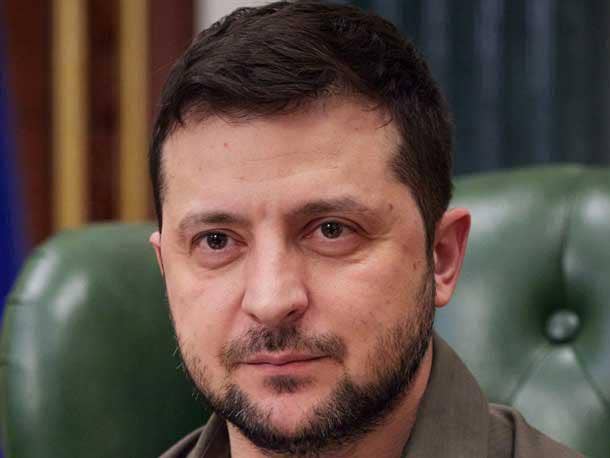
Ukraine President Volodymyr Zelenskyy
10. AWS Awarded Ukraine Peace Prize From President Volodymyr Zelenskyy
Ukraine President Volodymyr Zelenskyy awarded AWS the Ukraine Peace Prize in July for the support AWS has shown the Ukraine government and the Ukrainian people during Russia’s invasion.
This year, AWS has been working with Ukraine government officials to keep vital government services operating along with Ukrainian educational and banking institutions in a move to keep their applications and data secure.
One large technology investment AWS is pushing is IT Skills 4U, specifically designed to help the people of Ukraine.
IT Skills 4U provides free training, AWS Certification vouchers, and career services support for Ukrainians globally to help those with little to no technology experience and those who are experienced practitioners rejoin the workforce. It is a free, comprehensive workforce development initiative to help Ukrainians get connected with AWS-designed skills training and career support services.
On Nov. 29, Ukraine Deputy Prime Minister and Minister of Digital Transformation Mykhailo Fedorov and AWS’ Liam Maxwell, director of government transformation, signed a memorandum of understanding confirming continued cooperation in 2023.
The takeaway for 2023: With Russia’s invasion of Ukraine set to hit the one-year mark in a few months, it will be interesting to see what else AWS provides to Ukraine in 2023 to keep its digital assets secure and its IT workforce stable.
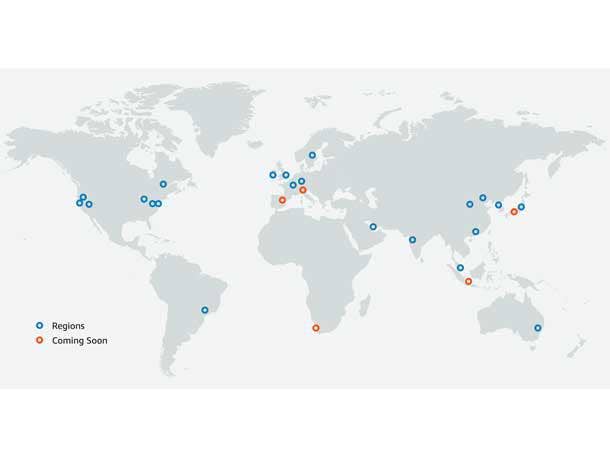
9. Billions On New Data Centers, Cloud Regions
AWS has one of the broadest data center footprints in the world in terms of capacity, amount of data centers as well as already billions in new data center pipeline ahead in 2023.
These data centers are the foundation for AWS’ Cloud Regions that enable AWS’ massive cloud services and support business.
In 2022, AWS continued to expand its cloud reach by launching new data centers in the U.S. and overseas.
Some major investments this year include a $6 billion investment to launch a new cloud region in Switzerland, as well as a $2.5 billion investment in Spain to expand its cloud regions in the country.
AWS Cloud Regions are composed of Availability Zones, which consist of one or more data centers. As of November 2022, AWS has 93 Availability Zones across 29 geographic regions with 18 new zones in the works across several AWS Regions.
The takeaway for 2023: With over a dozen new cloud regions being developed for 2023, it will be interesting to see just how many billions AWS spends next year on expanding its international reach as it fights for global cloud domination against Microsoft, Google and Alibaba.
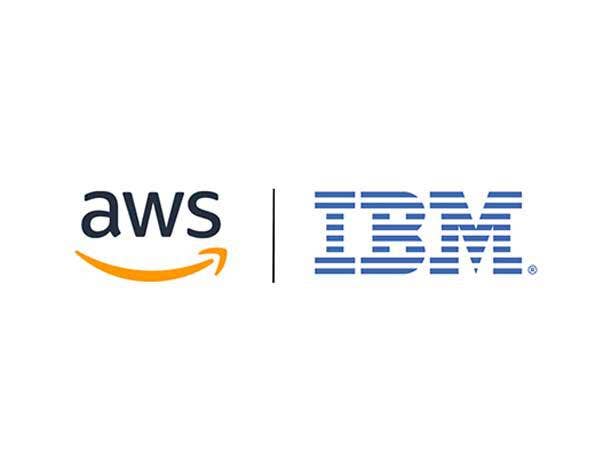
8. AWS-IBM Partnership
AWS created dozens of new strategic collaboration agreements with vendors and channel partners alike in 2022.
One of the boldest new collaboration agreements AWS created this year was with IBM.
In May, AWS and IBM unveiled an agreement that will see IBM offer its best-selling software products on the AWS Marketplace.
Channel partners can sell IBM’s Software-as-a-Service offerings to customers via the Marketplace with customers being able to use their cloud commitment spending with AWS on IBM products.
IBM products on the AWS Marketplace include IBM API Connect, IBM Db2, IBM Maximo Application Suite, IBM Security Verify, IBM Watson Orchestrate, IBM Envizi ESG Suite, IBM Planning Analytics with Watson, IBM Content Services and IBM App Connect Enterprise, to name a few.
“We have declared our ecosystem as one of our three strategic priorities, and the AWS partnership is a critical piece of that as we think about reaching new clients, adding more value to our existing clients, and continuing to add value for our partners as well,” IBM’s worldwide channel chief, Kate Woolley, recently told CRN.
The two technology giants also committed to joint investments to make it easier for customers to consume IBM software on AWS, including integrated go-to-market activities across sales and marketing, channel incentives, developer enablement and training.
The takeaway for 2023: AWS and IBM are partnering unlike ever before. It will be interesting to see how this collaboration impacts sales for both companies as well as IBM’s relationship with other cloud players.

CJ Moses, AWS’ chief information security officer
7. AWS Doubles Down On Cybersecurity
AWS is striving to become the most secure cloud platform on the planet.
In fact, CJ Moses, AWS’ chief information security officer, told CRN that Amazon owns the most secure cloud in the world compared with competitors Microsoft and Google.
“We don’t bolt security on. We build it from scratch,” Moses said. “Every service team that’s been hired has been hired with a security culture in mind.”
Cybersecurity has been front and center at AWS in 2022, with a slew of new security product launches as well as revamped security programs for the channel.
New security offerings include the enterprise secure collaboration offering AWS Wickr, the unified dashboard Vendor Insights for third-party software risk assessments and compliance, as well as Amazon Detective for Elastic Kubernetes Service (EKS) to help in security investigations.
Just last month, the company launched Amazon Security Lake, which automatically centralizes security data from cloud, on-premises and custom sources into a purpose-built data lake stored in a customer’s account.
On the partner front, AWS reinvented its popular AWS Security Competency program this year with eight new categories to help customers more easily find partner software and service solutions while also providing the channel with over 40 specific customer use cases.
The takeaway for 2023: AWS, Google and Microsoft are all battling to be known as the most secure cloud platform. With AWS’ cybersecurity investments in 2022, it will be interesting to see if security becomes any type of market differentiation strategy in 2023.

6. AWS Calls Out Microsoft
It is somewhat rare for AWS and its executives to publicly call out issues it has with competitors.
However, Microsoft announced licensing changes this year that had AWS calling Microsoft’s tactics “anti-competitive.”
For example, as part of the Microsoft licensing changes, the company removed the ability to outsource Services Provider Licensing agreements on data centers from Microsoft itself and cloud rivals Google, Alibaba and AWS.
“After admitting to anti-competitive software licensing in May, Microsoft is now doubling down on the same harmful practices by implementing even more restrictions in an unfair attempt to limit the competition it faces—rather than listening to its customers and restoring fair software licensing in the cloud for everyone,” AWS said in a statement.
AWS argued that the Microsoft licensing changes made it more expensive for customers to move from Microsoft Azure to other cloud platforms like AWS as well as for customers seeking multi-cloud solutions.
Matt Garman, AWS’ senior vice president of sales and marketing, said Microsoft’s “licensing rhetoric” is “a troubling admission of the same anti-competitive tactics that many companies have been raising with them for years.”
The takeaway for 2023: It will be interesting to see if AWS becomes more publicly vocal toward Microsoft as the two have been ranked No. 1 and No. 2, respectively, in the cloud market-share world for years.

5. Creating The AWS Marketplace ‘Universe’
The AWS Marketplace celebrated its 10-year anniversary in 2022 with hundreds of new ISV, channel partner and AWS offerings available on the online software store.
The ultimate goal is to make the AWS Marketplace the premium place where customers can buy all their cloud and technology services needs, while significantly cutting the procurement and implementation process time.
“We’re trying to create this universe and experience that’s all about running faster,” Mona Chadha, director of category management across the AWS Marketplace, told CRN in December. “Helping our consulting partners, managed service providers (MSPs), ISVs get solutions into the customers’ hands faster.”
New AWS capabilities launched on the AWS Marketplace this year included Amazon EKS Integration, AWS Data Exchange for Amazon S3 and Lake Formation, as well as Vendor Insights.
In addition, dozens of ISVs and channel partners made available new offerings and services on the AWS Marketplace this year—from IBM and Red Hat to Presidio and Accenture.
AWS worldwide channel chief Ruba Borno even said Cisco Systems is looking to leverage the AWS Marketplace to “cloud-enable” its vast channel partner ecosystem.
“Cisco gets over 90 percent of its revenue through channel partners—they want to have the AWS Marketplace be how they cloud-enable their channel partners,” said Borno.
The takeaway for 2023: AWS made a big push this year to urge ISV and its partners to market and sell more solutions via the AWS Marketplace. It will be interesting to see how big a role the AWS Marketplace will play in sales growth for ISVs and the channel in 2023.
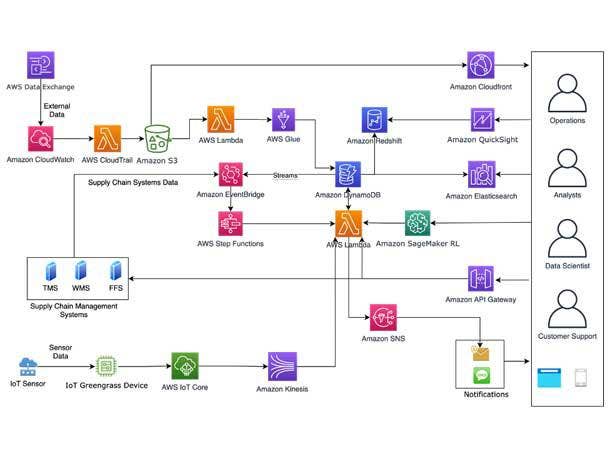
4. Innovation Engine Continues To Roar
It was nearly impossible to keep up with the amount of new AWS product and services launched in 2022.
From new Microsoft Windows support and VMware Cloud on AWS for NetApp to AWS Outposts and Amazon Managed Blockchain, the global cloud market-share leader continued to create new offerings to meet its customers’ needs in 2022.
“We’ve got so much innovation to share,” said Selipsky to open his keynote speech at AWS re:Invent 2022.
Looking solely at launches at AWS re:Invent last month, the company unveiled AWS Supply Chain, a new serverless option for Amazon OpenSearch, a variety of new EC2 instances, AWS SimSpace Weaver for large-scale simulations in the cloud, and data management services AWS DataZone.
The takeaway for 2023: It’s full steam ahead for AWS innovation for 2023. It will be exciting to see what AWS launches next year to meet the customer demand.

3. No Large Layoffs At AWS In 2022
The IT industry has seen a massive number of layoffs in 2022—from HP Inc. and Microsoft to Twilio and Nutanix.
Although AWS parent company Amazon is expected to eliminate 10,000 jobs across its retail, human resources and devices organizations, AWS came out of 2022 relatively unscathed in terms of large layoffs.
AWS has remained in a hiring freeze for months, but there have been no reports of large layoffs at the cloud company.
During AWS’ most recent quarterly earnings report, Amazon CFO Brian Olsavsky said AWS is a top priority for Amazon, where the company will continue to invest heavily.
“We continue to ramp up our investments in AWS, adding product builders and sales and professional services head count to help customers save money, invest more quickly in their businesses and transition to the cloud,” said Olsavsky in November.
In addition, Matt Garman, senior vice president of sales and marketing for AWS, said during AWS re:Invent that the company will likely add more employees next year compared with 2022.
“I anticipate that we actually will add some more head count [in 2023],” Garman told Bloomberg. “Our business is still growing rapidly.”
CRN spoke with many AWS partners at re:Invent who said their AWS business is booming.
AWS partner Triumph Technology Solutions is on pace to grow AWS sales by 500 percent in 2022 compared with 2021.
“We’re continuing to grow and scale in a global pandemic, a pending global recession—it doesn’t matter. We’re still growing with AWS. We’re still hiring. There’s no hiring freeze. No layoffs,” Victor Raymond, CEO of Philadelphia-based Triumph Technology Solutions, told CRN.
The takeaway for 2023: AWS proved in 2022 that it can withstand economic hurdles thrown its way without having to lay off a large number of employees as cloud demand continues to increase.

2. AWS $80 Billion Run Rate, 34 Percent Worldwide Market Share
AWS’ annual run rate is now exceeding $80 billion with no significant speed bumps ahead that will slow down its growth rate.
In the first quarter of 2022, AWS cloud sales soared 37 percent year over year to $18.4 billion.
AWS’ second-quarter 2022 saw a 33 percent increase in revenue year over year to over $19.7 billion.
For the company’s third quarter, cloud sales climbed 27 percent year over year to $20.5 billion.
As of the third quarter 2022, AWS is still the dominant worldwide market-share cloud services leader, owning 34 percent share of the global market. Microsoft ranks No. 2 at 21 percent share, followed by Google at 11 percent share.
The takeaway for 2023: With sales growing on average over 30 percent each quarter, AWS will likely reach over $100 billion in annual revenue next year.

AWS channel chief Ruba Borno and AWS CEO Adam Selipsky
1. AWS Is ‘Partner Obsessed’
Selipsky and Borno have made significant changes over the past year to drive partner momentum around co-selling and upskilling thousands of partners via new training programs.
Partners told CRN that AWS is leaning into the channel unlike ever before with a new motto to go along with its “customer obsessed” culture.
“Speaking of customer obsession, many of our partners are our customers as well. So we are partner-obsessed. Our partner experience is key to providing our customers with a great experience,” Borno told CRN. “We know that a superior partner experience will result in a superior customer experience.”
AWS partners are hailing the hiring of Borno last year from Cisco as one of the biggest and most influential channel moves in the company’s history, while Selipsky continues to back up partners.
Selipsky and Borno pushed for the formation of dozens of new partnerships with ISVs, distributors and other technology vendors to help drive simplicity, co-selling and new customer opportunities for partners.
“When we have partners who have innovated and created incredible solutions with us and on top of us, then it becomes an easy decision to put that in front of a customer because it drives customer value,” Selipsky said.
“We have a very significant go-to-market capability now across AWS—as you might imagine given the scale of our business—and we have many different ways that we bring partners along with that,” he said.
One new partner program driving AWS partner evolution is AWS Partner Paths.
Launched this year, Partner Paths provides a simplified and tailored experience to help partners differentiate themselves. The program includes benefits and AWS resources designed for each partner’s strengths and goals.
Training was also top of mind for AWS this year.
In 2022, AWS expanded its re/Start reskilling programs across the globe, opened an AWS Skills Center in Arlington, Va., to support in-person learning and launched its new AWS Training Partner Social Impact Program, which allows partners to offer customers a broad set of AWS skill development options by accessing government and public funding.
“We will keep on figuring out how to build value for customers with partners. And we will keep on ensuring that partners have increasingly strong businesses building alongside and on top of AWS,” said Selipsky. “I expect [our partner] commitment to continue for decades to come.”
The takeaway for 2023: Simply put, 2023 looks like a blockbuster year to be an AWS partner with Selipsky and Borno at the helm.